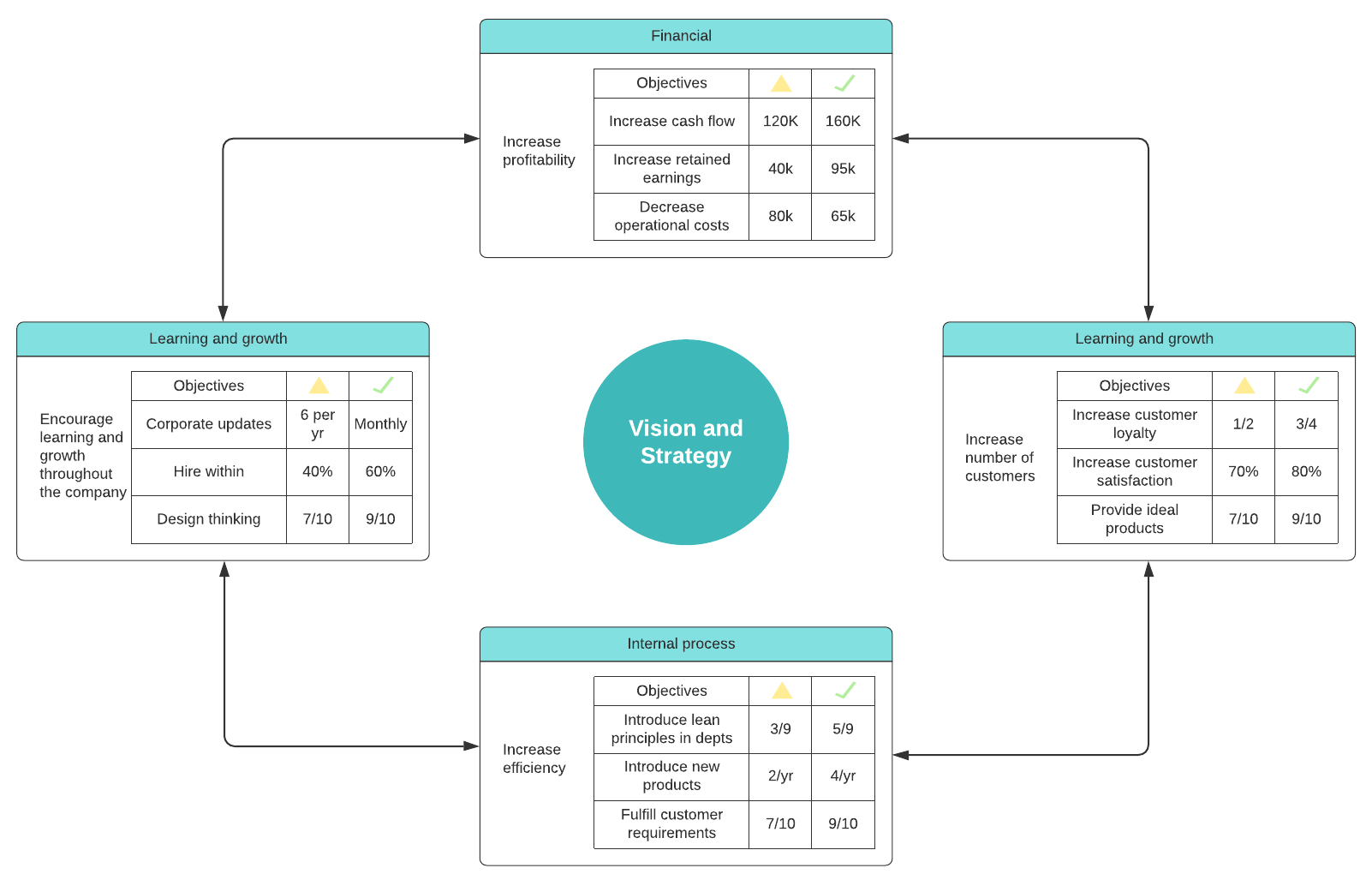
How to create a business analysis communication plan
Lucid Content
Reading time: about 6 min
Business analysts help companies improve their processes, systems, and operations by analyzing current practices, defining business needs, and proposing solutions. In other words, business analysts (BAs) are in the business of change.
Once BAs define the problems and the solutions, they help initiate changes through careful communication and planning across the organization. Because business analysis covers the entire organization, BAs must facilitate cross-functional communications that effectively speak to the needs for change and the path forward so stakeholders at every level support the initiative.
That’s where a strong communication plan comes in.
BAs must be skilled communicators, enabled by a robust communication strategy and plan. Without buy-in from employees and leaders throughout the company, change initiatives will fall flat.
Below we’ll cover what a business analysis communication plan is, why it’s important, and best practices for developing a BA communication strategy.
Why is it important to have a communication plan?
A formal communication strategy helps business analysts communicate change requirements, project initiatives, and business needs clearly and consistently. This is an important part of the communication strategy because business analysts must be able to communicate clearly across the organization throughout the iterative change management process.
As projects and requirements evolve and different stakeholders engage in the process (or are impacted by the initiatives), communication acts as the glue that holds everything together and keeps everyone on the same page.
A communication plan provides a roadmap to guide messaging decisions and ensure that information is relayed in the right way to the right people.
In short, a strong communication plan:
- Keeps things organized
- Drives efficiency through a set process
- Ensures the communications reach the right audience
What is a business analysis communication plan?
Requirements communication is an important part of a BA’s responsibilities. Ongoing, iterative communication helps BAs convey key business requirements, findings, and recommendations throughout the business analysis process.
Business analysis and requirements communication involve numerous activities including:
- Managing conflicts
- Determining the requirements format
- Creating a requirements package
- Presenting the analysis and requirements
- Reviewing requirements
- Obtaining requirements signoff
To successfully communicate through each of these tasks, BAs need a clear communication plan.
A business analysis communication plan is a framework that helps BAs document:
- What information needs to be shared.
- Who needs to receive the information.
- When information should be delivered.
- How information will be shared (platform and setting).
- Required stakeholder actions (sign off, review, give feedback).
- Next steps after stakeholder actions.
A communication plan should outline the purpose of the communication, how those goals will be achieved, the audience, the timeline for delivery, and how results will be measured.
Use visuals to outline your communication plans and keep track of key messaging strategies. Visuals like a communication plan chart or communication matrix can help you get started.

Visualizing your communication plan will keep your framework organized into key categories such as stakeholders, deliverables, task or project owners, priority, and delivery method. Take advantage of visualization solutions that are easily shareable and collaborative to disseminate information efficiently and keep everyone on the same page.
Best practices for developing communication plans
Creating and implementing a robust communication plan takes work. But the payoff is worth it. Use the following tips and best practices to nail your business communication every step of the way.
1. Determine your communication goals
What is your purpose for the communication? For instance, are you managing conflict, creating a requirements package, or seeking sign-off from stakeholders? Each objective will affect how you communicate with your audience and the tools and strategies you use.
For example, if you are managing conflict surrounding business requirements and stakeholder expectations, you might have to get everyone in a room together to have a meeting to bridge the gap. Or, you may need to prepare a presentation with additional supporting research to back up your initial requirements analysis.
2. Consider your audience
How you communicate information will also depend on who your audience is. Consider what communication format and messaging is most effective for each individual or group you’re communicating with.
For example, your audience may be most receptive to a formal presentation with follow-up emails. Meet your audience where they are while ensuring all requirements are fully documented throughout the process for reference.
Communication methods could include:
- Check-ins
- Status reports
- Meeting summaries
- Presentations
- Video conferencing
- Chat or email
- Shared collaboration tools like interactive visuals
3. Pay attention to frequency
Communication can make or break your company’s engagement. While what you say is important, how often you communicate can play an equally important role in building trust and keeping everyone on the same page throughout the change management process.
Don’t leave people to guess what is going on in the business or how it might impact them. Bring people into the conversation so you are always working from the most up-to-date information and ensuring no one is left in the dark.
Paying attention to the frequency and cadence of your communications will improve engagement and buy-in from your stakeholders across the organization.
4. Use visuals to deliver your communication
Communication must be consistent and clear. Avoid text-heavy, complex plans in favor of easy-to-digest roadmaps. While many BAs outline their plans in spreadsheets or text documents, visuals can help you organize and present your messaging plans and information simply and effectively through every business analysis stage.
The following templates can help you get started:
BPMN Process Flow
BPMN process flow diagrams help analysts understand current business processes and identify opportunities to improve them. These are a great addition to your BA toolbelt both for analyzing and documenting as-is processes as part of your analysis, as well as communicating your findings to stakeholders. Use these diagrams to illustrate current processes and pinpoint where and how your recommendations fit in.

Current vs. Target Balanced Scorecard
Balanced scorecards help BAs compare current business metrics to strategic goals. These are a great tool for analyzing the gap between where the business is now and where it would like to be. Use balanced scorecards to help communicate gaps in your strategic targets and support your case for recommended requirements.

Business Model Canvas
A Business Model Canvas is a one-page document that summarizes your business plans. This is a great asset for BAs because it succinctly communicates strategy, plans, and vision with enough detail to provide context and clear information about process and decision-making.
Business Model Canvas organizes the following information in one easy-to-digest visual:
- Value proposition—What problem are you solving
- Key partners—Who needs to be involved in producing and delivering these solutions
- Key activities—What needs to be done to achieve your goal
- Key resources—What you need to deliver these results
- Customer relationships—How do you talk to your market about these solutions
- Customer segments—Who needs your solution
- Channels—How will you deliver your solution
This visual is a great tool for organizing your plans and communicating the business value of your recommendations to stakeholders at every level.
A successful business analysis isn’t complete without a well-executed communication plan. Use these tips to bring your organization together on key business requirements and make an impact today.

Create a robust communication plan and strategy to gain employee buy-in and communicate key details with stakeholders in Lucidchart.
Start planningAbout Lucidchart
Lucidchart, a cloud-based intelligent diagramming application, is a core component of Lucid Software's Visual Collaboration Suite. This intuitive, cloud-based solution empowers teams to collaborate in real-time to build flowcharts, mockups, UML diagrams, customer journey maps, and more. Lucidchart propels teams forward to build the future faster. Lucid is proud to serve top businesses around the world, including customers such as Google, GE, and NBC Universal, and 99% of the Fortune 500. Lucid partners with industry leaders, including Google, Atlassian, and Microsoft. Since its founding, Lucid has received numerous awards for its products, business, and workplace culture. For more information, visit lucidchart.com.
